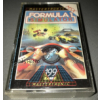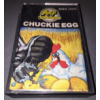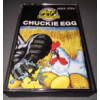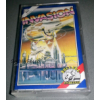|
MSX was the name of a standardized home computer architecture in the 1980s conceived by Kazuhiko Nishi, then Vice-president at Microsoft Japan and Director at ASCII Corporation. Microsoft are rumoured to have led the project as an attempt to create unified standards among hardware makers. Despite Microsoft's involvement, MSX-based machines were seldom seen in the USA and UK, but they were popular in other markets. Eventually 5 million MSX-based units were sold worldwide. The standard consisted primarily of several off-the-shelf parts; the main CPU was a 3.58MHz Z80 a Texas Instruments TMS9918 graphics chip with 16 KB (KiB) of dedicated VRAM, and the AY-3-8910 chip for sound. An Intel 8255 Programmable Peripheral Interface chip was used for the parallel I/O such as the keyboard. This was a choice of components that was shared by many other home computers and games consoles of the period, such as the ColecoVision home computer (an emulator was later available with which MSX systems could run some of its software), and the Sega SG-1000 video game system. To reduce overall system cost, many MSX models used a custom IC known as the "MSX-Engine", which integrated glue logic, 8255 PPI, YM2149 compatible soundchip and more, sometimes even the Z80 CPU. However, almost all MSX systems used a professional keyboard, driving the price up again. Consequently, these components, coupled with Microsoft's MSX BASIC made the MSX a competitive, though somewhat expensive, home computer package. A problem for some game software developers was that the method by which MSX-1 computers addressed their video ram could be quite slow compared to systems that gave direct access. This, and the fact that the completely different features the MSX-1's video chip (using the MSX Video access method) had to compensate for the slower video access were not efficiently used while porting (mostly Spectrum) software, made the MSX-1 to appear slower when running ported games. MSX spawned four generations: MSX (1983); MSX2 (1986); MSX2+ (1988); and MSX TurboR (1990). The first three were 8-bit computers based on the Z80 microprocessor, while the MSX TurboR was based on an enhanced Zilog Z800 known as the R800. The MSX TurboR was introduced in 1990 but was unsuccessful due to a lack of support and the rise in popularity of the by then well-established IBM PC Compatible market. Production of the TurboR ended in 1995. |
MSX Computers  Sort By
Sort By
| Item | Ending in | Current price | ||
|---|---|---|---|---|

|
Octagon Squad | £2.75 | Buy now! | |

|
Octagon Squad | £2.75 | Buy now! | |

|
Space Walk | £2.35 | Buy now! | |

|
Jet Set Willy | £4.95 | Buy now! | |

|
Manic Miner | £4.65 | Buy now! | |

|
Manic Miner | £4.65 | Buy now! | |

|
Formula 1 Simulator | £2.65 | Buy now! | |

|
Manic Miner | £4.65 | Buy now! | |

|
Chuckie Egg | £4.65 | Buy now! | |

|
Chuckie Egg | £4.65 | Buy now! | |

|
Chuckie Egg | £4.65 | Buy now! | |

|
Panzer Attack | £3.65 | Buy now! | |

|
Manic Miner | £4.65 | Buy now! | |

|
Checkmate! - First Moves In Chess | £2.95 | Buy now! | |

|
Terminus | £2.25 | Buy now! | |

|
Chiller | £2.65 | Buy now! | |

|
Chiller | £2.65 | Buy now! | |

|
Jackle & Wide | £3.15 | Buy now! | |

|
Invasion | £3.25 | Buy now! | |

|
Football Manager | £4.75 | Buy now! | |



